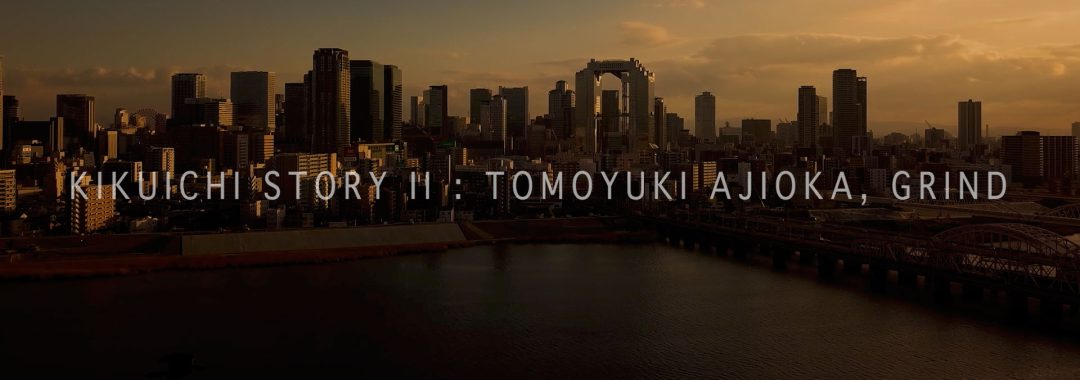In Praise of Shadows, Cinematography, and Time to Time
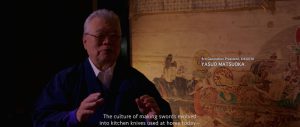 The light is not so much manipulated as it is perfectly controlled. I don't think it is possible to manipulate light perfectly outdoors, but it is possible to manipulate light to a certain extent indoors by blocking out all ambient light. What should be praised, however, are the unintended effects of changes in time and place that cannot be captured intentionally, and I do not necessarily believe that a beautiful visual world can be created if everything is done exactly as thought out in the mind. Rather, it is simply a matter of learning a few rules and letting nature do the rest. However, mistakes are always possible, so my interest lies in how to prevent them while creating a satisfactory picture.
The light is not so much manipulated as it is perfectly controlled. I don't think it is possible to manipulate light perfectly outdoors, but it is possible to manipulate light to a certain extent indoors by blocking out all ambient light. What should be praised, however, are the unintended effects of changes in time and place that cannot be captured intentionally, and I do not necessarily believe that a beautiful visual world can be created if everything is done exactly as thought out in the mind. Rather, it is simply a matter of learning a few rules and letting nature do the rest. However, mistakes are always possible, so my interest lies in how to prevent them while creating a satisfactory picture.
The following are the three decisions I made regarding the lighting for this creative shoot.
- The key light should come from behind the subject. As far as that source is in the rear, it does not matter if it is a little to the rear of the subject, or even right behind the subject.
- In Praise of Shadows - Wikipedia
- There are seven types of light conditions for the subject. Except for a few, the light source is almost always in a type of a single point or specular.
- A little light shines on the subject's surface
- The subject is not lit at all (silhouette)
- When the light is casted from directly behind the subject, the subject surface on the camera side usually has a few bright spots.
- The subject is not lit at all (at least at the exposure level), but the background is lit, resulting in a difference in brightness or darkness
- It is the shadow of a subject
- It is a light source itself (sun, moon, fire, electric light, etc.)
- It is the reflection of a subject (the subject on the reflective surface is bright and the background is dark)
- It is a reflection of the shadow of a subject (the subject on the reflective surface is dark and the background is bright)
- The light source is extremely large, the contrast between light and shadow is ambiguous, and the overall brightness of the painting is below the upper limit of IRE 20~30. However, the brightness of gold patterns in Japanese paintings and lacquerware may indicate around 40.
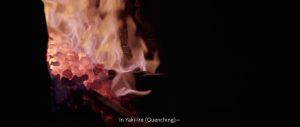 Even though it is called "In Praise of Shadows," photographic technique itself does not work well in the absence of light. Shadows can be enhanced, but only by contrasting them with areas that are not shadows. If there is no light at all, it is like shooting with a covered lens. In terms of IRE, it is assumed the impression of shadows can be configured to be 0 to 30, at best. Values higher than that are difficult to capture as shadows. Therefore, most of the subject's surface should be as dark as possible.
Even though it is called "In Praise of Shadows," photographic technique itself does not work well in the absence of light. Shadows can be enhanced, but only by contrasting them with areas that are not shadows. If there is no light at all, it is like shooting with a covered lens. In terms of IRE, it is assumed the impression of shadows can be configured to be 0 to 30, at best. Values higher than that are difficult to capture as shadows. Therefore, most of the subject's surface should be as dark as possible.
It is important that the subject is conveniently lit from behind and that there is no bright light on the subject's surface, so two types of lighting are kept in mind here: Positive Lighting and Negative Lighting. The two main types of lighting equipment used are as follows:
- Flags (we use 42" or 22" reflectors with black covers)
- Aputure LS 60x, also carrying a light stand
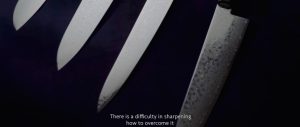 The most important is portability. The 60x is powered by two Sony L batteries. This lighting is available in variable color temperatures. Fixed color temperature version is brighter as usual and the variable version is a bit weaker. However, even with the variable color temperature, there was enough brightness for my purposes, so I chose convenience here and used the 60x. Incidentally, the Genaray Torpedo that I used for many years runs on a single Sony L, but the light output only goes up to about 50% when running on battery power. Besides, the batteries run out quickly.
The most important is portability. The 60x is powered by two Sony L batteries. This lighting is available in variable color temperatures. Fixed color temperature version is brighter as usual and the variable version is a bit weaker. However, even with the variable color temperature, there was enough brightness for my purposes, so I chose convenience here and used the 60x. Incidentally, the Genaray Torpedo that I used for many years runs on a single Sony L, but the light output only goes up to about 50% when running on battery power. Besides, the batteries run out quickly.
The crew consisted of only two people: the director/cinematographer and my assistant. The camera to be used is a small one, run & gun to save time in installation and to allow us to get into tight spots. Over the years, probably since the beginning of the decade, since video ads started appearing in large numbers on YouTube, etc., the dominant techniques used in this type of filming include the following:
- Small camera and gimbal (gimbal, gimbal...let me tell you that when I pronounce “gimbal,” not a few Japanese people want to re-pronounce it like “jimbal,” which annoys me often.
- Slow motion (120p or higher with sound. The Sony a7SII I use is limited to Full HD at 120p)
- Focal length is 35-50mm (35mm equivalent), fast lens.
In addition to the above, I use a
- Diopter, a so-called close-up filter.
- Polarizer
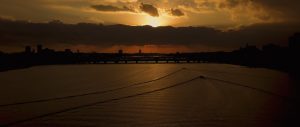 I use a polarizer. The purpose of using a polarizer is, among other things, to reduce the strong contrast between whites and highlights. The first book that gave me some insight into this insight was "Light & Shadow: Dynamic Lighting Design for Location Portrait Photography" by Tony L. Corbell. I was looking for something good to use when I didn't have a lot of time to set up and was forced to shoot in ambient light that changed from time to time. At first, I searched for something like "documentary cinematography," but I couldn't find anything good, and when I was at a loss, I came across this book, which changed my mind about exposure as a photographic technique. The content of the book is for intermediate photographers. The most interesting thing about this book is that it is easy to understand and almost all of the descriptions are based on the author's own experiences and observations over the years.
I use a polarizer. The purpose of using a polarizer is, among other things, to reduce the strong contrast between whites and highlights. The first book that gave me some insight into this insight was "Light & Shadow: Dynamic Lighting Design for Location Portrait Photography" by Tony L. Corbell. I was looking for something good to use when I didn't have a lot of time to set up and was forced to shoot in ambient light that changed from time to time. At first, I searched for something like "documentary cinematography," but I couldn't find anything good, and when I was at a loss, I came across this book, which changed my mind about exposure as a photographic technique. The content of the book is for intermediate photographers. The most interesting thing about this book is that it is easy to understand and almost all of the descriptions are based on the author's own experiences and observations over the years.
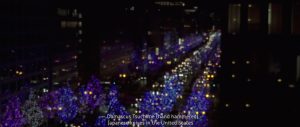 I experimented several times with the Sony a7SII using color charts and found that shooting with the color profile off gave only 7-8 stops of dynamic range, so I have been using the log since then. I use "s-log2" for this shooting and "From_SLog2SGumut_To_LC-709TypeA_.cube" for the output LUT. The color corrector lays with another lumetri color (premier) on top of the effects (premier pro) where the LUT is placed, and easily pre-adjusts the exposures. It is hard to use a gray card for this shoot. Most of the subject surface is in shadow. I mainly use the Waveform for exposure and shoot as brightly as possible, and although I am somewhat conscious of ETTR, I think it is safer to fill in blacks and process noise with Neat Video than to make the white pop out. In addition, since the light source is almost always removed and a polarizer is used to reduce glare, there is often plenty of room at the top of the image. In addition, 3D LUT Creator is used to create LUTs using color charts. Some of you are aware of 8-bit color space video. Yes, the final product on YouTube has a certain amount of banding noises.
I experimented several times with the Sony a7SII using color charts and found that shooting with the color profile off gave only 7-8 stops of dynamic range, so I have been using the log since then. I use "s-log2" for this shooting and "From_SLog2SGumut_To_LC-709TypeA_.cube" for the output LUT. The color corrector lays with another lumetri color (premier) on top of the effects (premier pro) where the LUT is placed, and easily pre-adjusts the exposures. It is hard to use a gray card for this shoot. Most of the subject surface is in shadow. I mainly use the Waveform for exposure and shoot as brightly as possible, and although I am somewhat conscious of ETTR, I think it is safer to fill in blacks and process noise with Neat Video than to make the white pop out. In addition, since the light source is almost always removed and a polarizer is used to reduce glare, there is often plenty of room at the top of the image. In addition, 3D LUT Creator is used to create LUTs using color charts. Some of you are aware of 8-bit color space video. Yes, the final product on YouTube has a certain amount of banding noises.
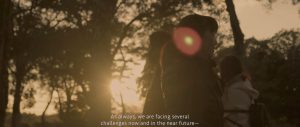 The lens is basically a normal lens. I do not have time to adjust the balance of a gimbal, everytime I change lenses. In addition, I have always wanted to throw a stone at the usage of the long lenses used by Japanese filmmakers in particular. A documentary director (who lives in New York and won an award at the T**** International Film Festival about 20 years ago, apparently) once told me, "I've been doing this for a long time and I finally realized. One of the things that is important is the distance between the photographer and the subject. If the photographer is shy or has some other reason not to be able to approach the subject easily, he or she will shoot from a distance with a long lens. The picture unconsciously conveys the distance and relationship between the photographer and the subject. Is this intentional or not? If the photographer is "looking" intimately at the subject, he or she should be shooting from a close distance. So I get as close as possible to the subject and take a shot with a normal focal length.
The lens is basically a normal lens. I do not have time to adjust the balance of a gimbal, everytime I change lenses. In addition, I have always wanted to throw a stone at the usage of the long lenses used by Japanese filmmakers in particular. A documentary director (who lives in New York and won an award at the T**** International Film Festival about 20 years ago, apparently) once told me, "I've been doing this for a long time and I finally realized. One of the things that is important is the distance between the photographer and the subject. If the photographer is shy or has some other reason not to be able to approach the subject easily, he or she will shoot from a distance with a long lens. The picture unconsciously conveys the distance and relationship between the photographer and the subject. Is this intentional or not? If the photographer is "looking" intimately at the subject, he or she should be shooting from a close distance. So I get as close as possible to the subject and take a shot with a normal focal length.
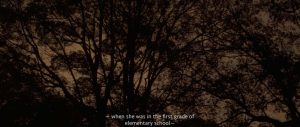 ..It is raining outside. Rain at night is beautiful. But it is too dark to see the raindrops. It is the sound that makes us recognize the rain as rain. What if this rain was falling slowly? Would it be falling fast and pounding or slow and fluffy? The difference between the two is discernible in the sound. One of the recent trends in visual style is slow motion, and we notice that some of the most skillful works create the illusion of the passage of time with the image and the passage of time with the sound. Even in visually obvious slow motion, the receiver's sense of time is not slowed down when a faster auditory stimulus is conveyed. One of the hypotheses used in this creation is that the sense of time relies more heavily on the auditory than on the visual.
..It is raining outside. Rain at night is beautiful. But it is too dark to see the raindrops. It is the sound that makes us recognize the rain as rain. What if this rain was falling slowly? Would it be falling fast and pounding or slow and fluffy? The difference between the two is discernible in the sound. One of the recent trends in visual style is slow motion, and we notice that some of the most skillful works create the illusion of the passage of time with the image and the passage of time with the sound. Even in visually obvious slow motion, the receiver's sense of time is not slowed down when a faster auditory stimulus is conveyed. One of the hypotheses used in this creation is that the sense of time relies more heavily on the auditory than on the visual.
The passage of time is always different. Everyone has experienced the feeling of time being long or short. Time passes quickly when we spend time in the hustle and bustle of the city, time flows naturally when we spend time in the countryside listening to the sound of insects, and time stops in a world without sound. The longest time in my life was probably when I was in elementary and junior high school and the principal was telling stories, but it would have felt faster if rock music had been played as background music. If anything, I wish the principal had sung.
The Kikuichi Story Trilogy is on YouTube:

